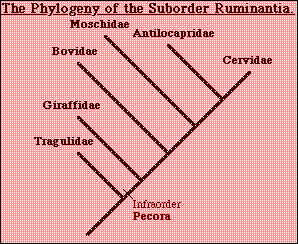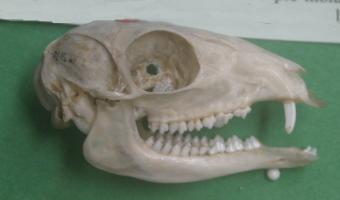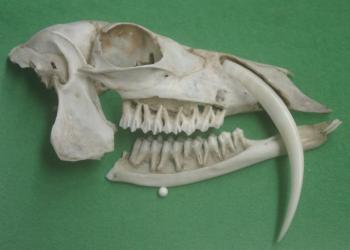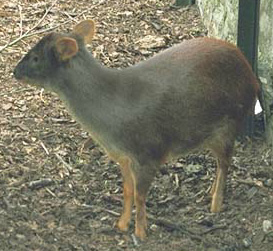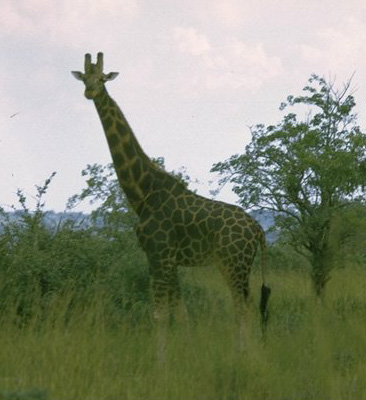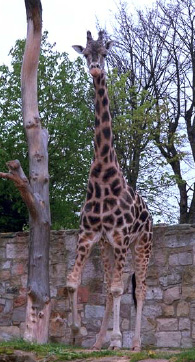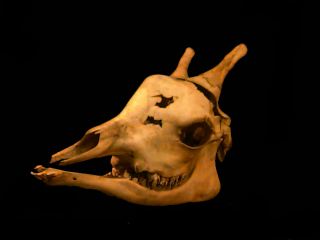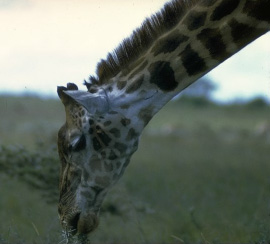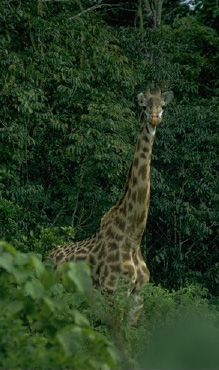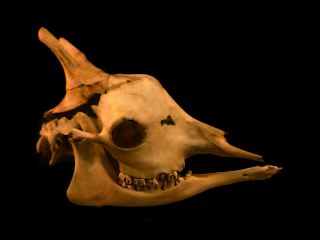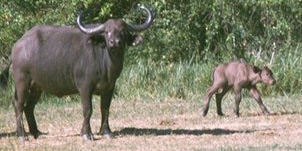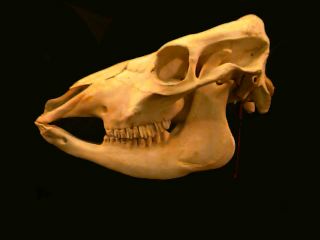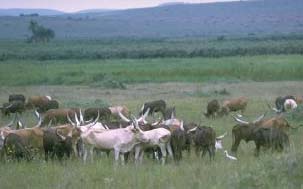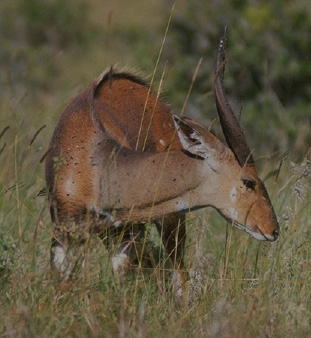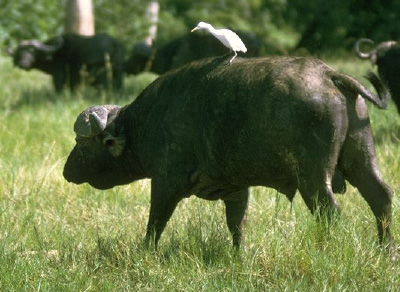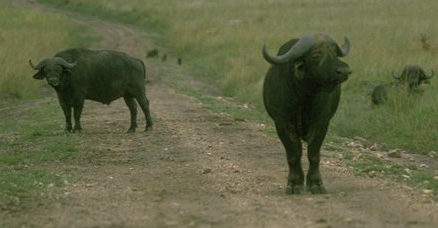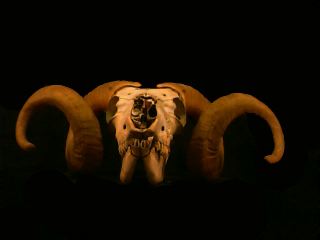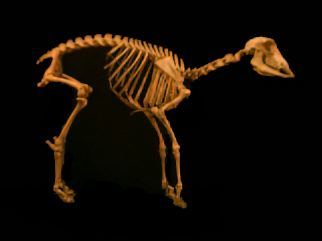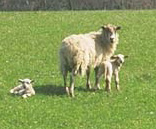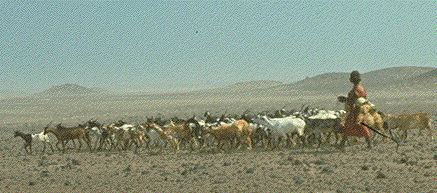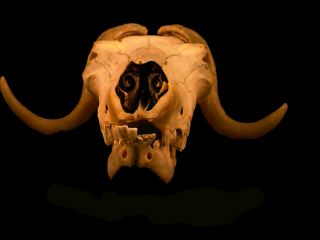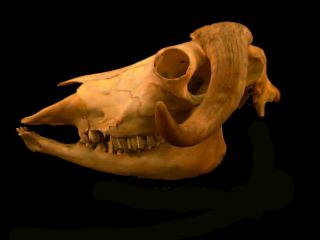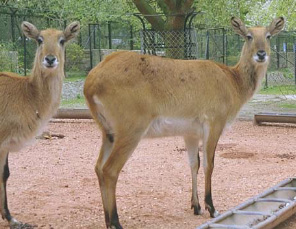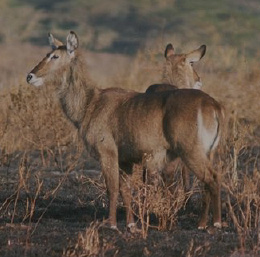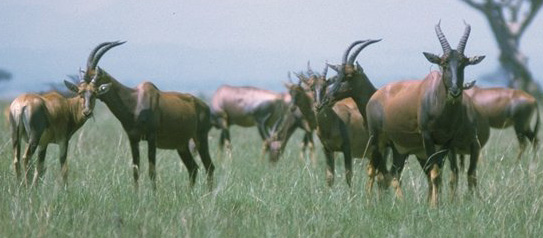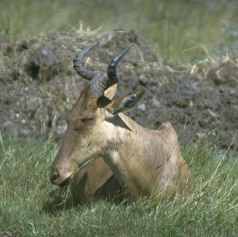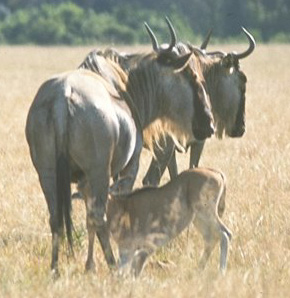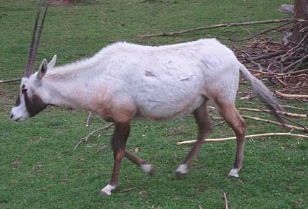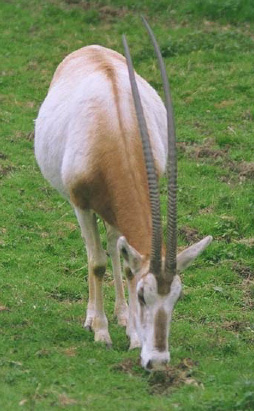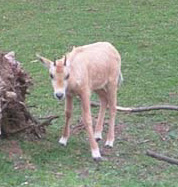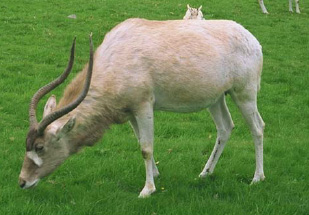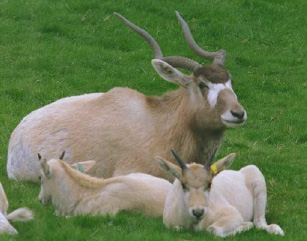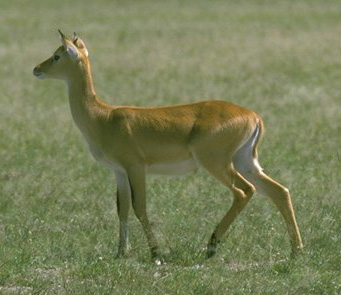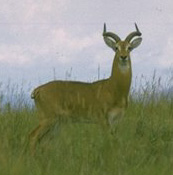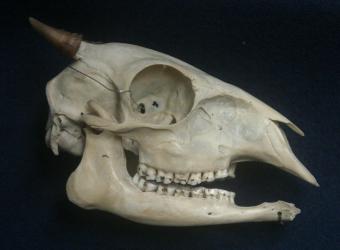
SUBORDER RUMINANTIAThe ruminantia is the largest suborder in the Artiodactyla. It contains 66 living genera and 164 living species The following families are included:
Characteristic features include:
Furthermore, ruminants are generally gracile (slender or light in build) and mostly bear horns of some description. All the ruminants except the tragulids are in the infraorder Pecora (the horned ruminants).
The chevrotains are a small family of very primitive, forest-dwelling, deer-like ruminants. They are found in the forests of South East Asia and West Africa, often close to streams. The smallest are no bigger than a rabbit. These are the most primitive modern ruminants. They are regarded as being intermediate between the tylopods and the ruminants. Sometimes they are included in the Tylopoda, but generally they are considered to belong in the Ruminantia. A mixture of archaic and derived features demonstrates their status as the most primitve ruminants. They show many archaic features:
Advanced features:
One genus - Moschus - of three small, forest-dwelling species. Males lack antlers - instead they have large canines. The hind legs are longer than the fore legs and musk deer move fast by leaping. Hopefully the farming of these deer for musk in China will safeguard their future in the wild. Musk is used in perfume, and can be removed from the gland without killing the animal. The deer are characterised best by the presence of antlers (deciduous horns although they are really just bone without a horny covering) in the males, although not all members of the family possess them. The cervids have spent most of their history, and are still mainly found, in the temperate forests of the northern hemisphere, although South America was reached in the Pleistocene. The cheek teeth remain low crowned, as deer are browsing animals and suffer less wear on their teeth than grazers. Few features separate them from other ruminants.
FAMILY ANTILOCAPRIDAE: THE PRONGHORN The pronghorn, Antilocapra americana , is the only modern member of this family, which contained 5 genera in the Pleistocene. The pronghorn has horns that consist of a bone core covered with keratin, as in bovids, but the keratin is shed every year like the antlers of deer. Seventy years of persecution by white settlers reduced the 50 million pronghorn on the prairies of North America in 1850 to a mere 13,000. Today, their numbers have recovered a little to 450,000 pronghorns.
The two modern members are the primitive okapi and the familiar giraffe.
Early giraffids resembled the okapi. Later giraffes included Sivatherium, a massive, ox-like animal with huge horns like those of an elk. A piece of ancient Sumerian jewellery depicts what appears to be a sivathere, suggesting that this animal may have persisted almost into recorded history. They are united by:
. The giraffe skull shows typical ruminant features, but giraffes are unusual in that they are born with horns. The laying down of extra bone on the forehead and above the eyes can give the misleading impression of 3 or 5-horned giraffes.
Giraffes mostly inhabit open woodlands and wooded grassland in sub-Saharan Africa. They are highly selective feeders, taking high quality food from trees (males) and tall shrubs (females). Giraffes do not live in fixed social units, but feed in loose herds. Some giraffes are also found in forests.
Giraffes are hunted by subsistence farmers. They may be farmed in the future, as they browse on plants not used by other livestock and will hopefully replace sheep and goats which overgraze.
This hugely successful family includes a total of 120 extant species of bovid, in 6 sub-families and 4 genera. This family includes the musk-ox, bison, antelopes, duikers and several species important to man - cattle, sheep, the yak and goats. Bovids are found throughout Eurasia, Africa and North America. Africa is probably their stronghold. There is more variation in form within the family than between the bovids and other ruminants. They range in size from the tiny duikers to the huge cape buffalo. Horns (non-decidious keratin on bony roots) are usually borne by both sexes. Many bovids live in herds, probably for defence. This can be very successful - cape buffalo (below) herds in Africa have been seen to contain blind and even three-legged members.
This skull of a young female domestic cow, and that of the zebra (Equus burchelli), a perissodactyl, show several similar features, despite their belonging to different orders. This is the result of convergent evolution as both species have skulls adapted for a diet consisting mainly of grass. Both skulls show:
However, the skulls are still recognisably different in other respects - the cow lacks upper incisors, for example. The bovids are divided among 6 subfamilies.
Subfamily Bovinae - Cattle and spiral-horned antelopesDOMESTIC CATTLE Cattle are probably the most important ungulates for people. They are used on every continent, having been introduced to Australia and South America, as either a source of milk, a source of meat, a source of leather or beasts of burden,
BUSHBUCK AND WILD CATTLE
Subfamily CaprinaeSHEEP
GOATS
THE MUSK-OX.
The musk-ox is a heavily built animal of the tundra. The horns of the male musk ox are larger than those of the female. Herds of musk-ox will form circles of adults facing outward, with the calves protected in the centre of the circle, as a defence against wolves. Its size, of course, is an adaptation to the extreme cold as is its huge shaggy coat. Similar adaptations are seen in the yak of Tibet. Remarkably, yaks ruminate at 40 C, keeping the animals warm on the cold mountainsides.
Subfamily HippotraginaeThe grazing antelopes (23 species in 11 genera) inhabit the great grasslands of Sub-Saharan Africa - while some inhabit wetlands (kob and lechwe) and moist savannah (topi), others inhabit moist grassland and open woodland (hartebeest and wildebeest), and yet others the arid lands (oryx and addax).
The incredible horns of all species of Oryx are distinctive amongst the bovids for their size and straightness.
Oryx often live in very dry areas, and can go months without drinking.
Subfamily Antilopinae
Subfamily Cephalophinae
Duikers are mostly forest dwelling animals that occur only in sub-Saharan Africa. Their skulls have thickened and enlarged frontal bones and their short horns grow far back on their skulls. These features appear to be linked to the very hard-heading butting that many species direct at rivals and predators. Maxwell's duiker lives in rainforests and moist savannah in West Africa and feeds on fallen fruits, herbs, shrubs and new shoots. |







